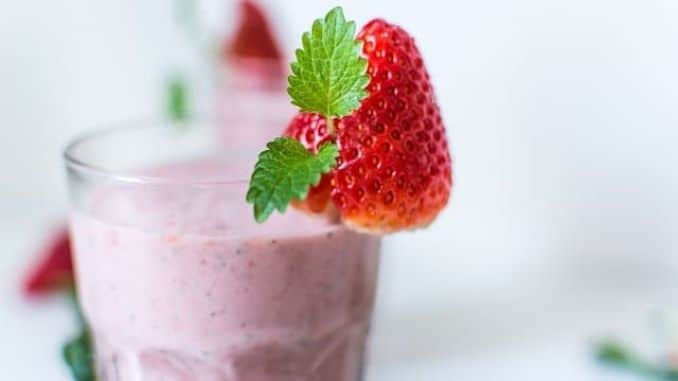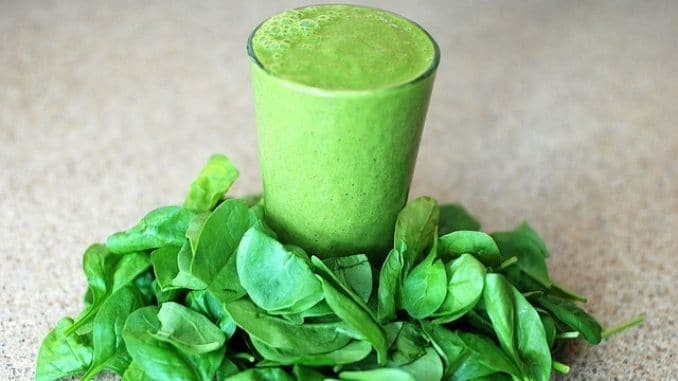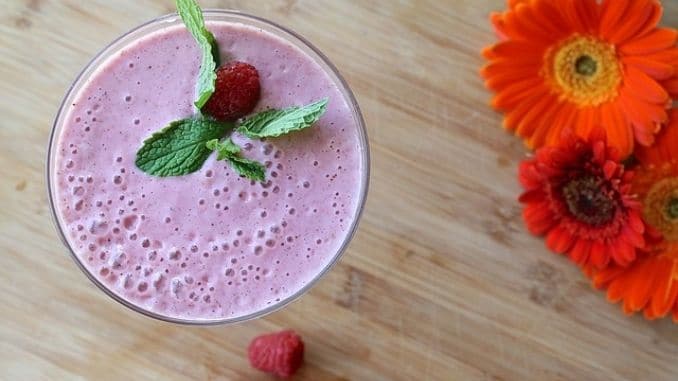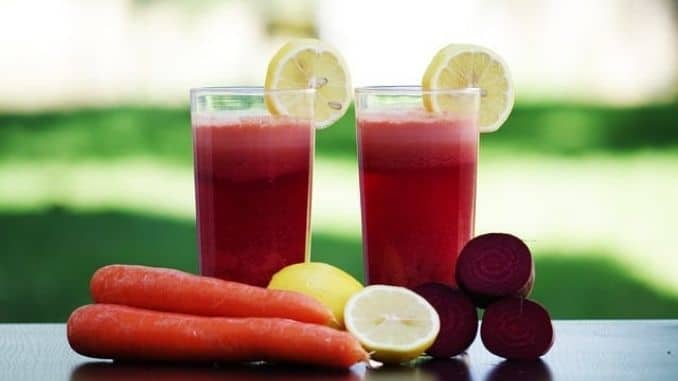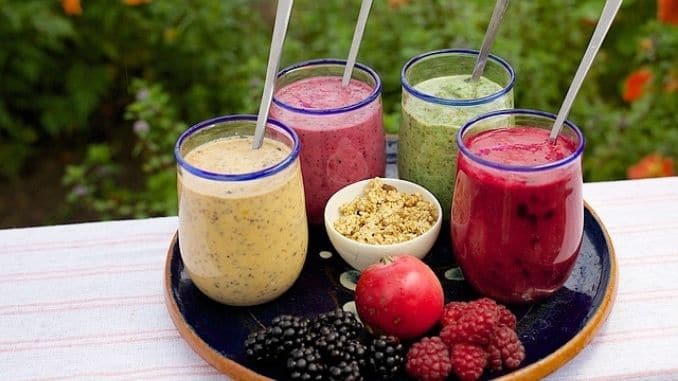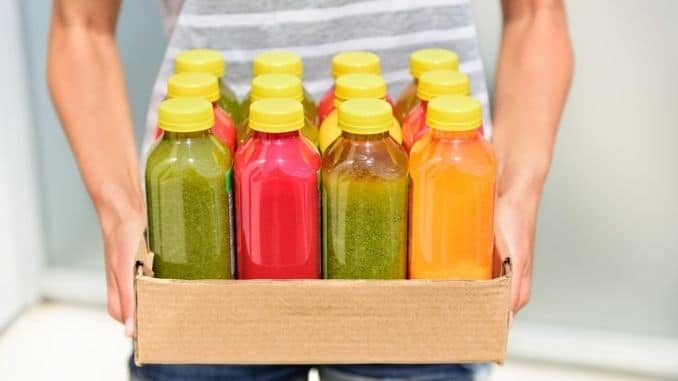
The juicing craze began a little more than a decade ago and, in many circles, it’s still going strong. Recent research has cast doubt, however, on whether or not it’s a good idea for your health. Certain juicing trends are also touting benefits for which there is just no scientific support.
Although there’s nothing wrong with enjoying a juice or a smoothie now and then, some people are hopping onto the juicing diet bandwagon for the wrong reasons. If you’re currently juicing or thinking about juicing, make sure you have all the facts first.
Myth #1. Juicing Helps You Lose Weight
There are many juicing diets out there promising to help you lose weight. Although the fruits and vegetables used in most juices are low in calories on their own, when they’re combined into a smoothie or blended juice, they can add up quickly.
Juicing four to five cups of fruit, for example, creates about 480 to 600 calories in one serving. If you’re limiting yourself to only the juice for a meal, that may result in temporary weight loss, but it’s not the kind of lasting weight loss you’re probably going for. As soon as you return to your normal diet, the pounds are likely to come back on.
Additionally, a juicing diet is nutritionally unbalanced. Juices contain a lot of natural sugar, often in the form of fructose, which is more likely to be turned into fat in the body. You’ll be lacking fiber and protein — both nutrients you need to feel full — which means a juicing diet can also leave you feeling hungry and fatigued.
Finally, juicing diets that are restrictive in calories can put the body into starvation mode, slowing the metabolism and making it even more difficult to maintain weight loss after the diet is over.
Myth #2. Juicing Is a Good Way to Rid the Body of Toxins
Juicing is often advertised as a way to “cleanse” the body of toxins. The myth goes that if you limit yourself to only fruit and vegetable juices, you’ll help the body flush out toxins that have built up over time.
There is no scientific evidence to support this trend. The body is very efficient at detoxifying itself through the liver, kidneys, immune system and digestive system. Immune cells are constantly watching for invaders and turning them over to the liver, which filters and neutralizes them and hands them over to the intestines and kidneys to flush out of the body.
In addition, fasting and lack of protein, which often occur with a juice cleanse, deplete the liver’s supply of glutathione, a powerful antioxidant that is important to the immune system and to the liver’s ability to clean the blood of toxins. That means that cleanses may result in more toxins in the body rather than less.
Worse, cleanses meant to flush out the intestines may do more harm than good. While they’re moving the stool out, they could also take some of the good bacteria with them. Juice cleanses often result in diarrhea, which can be disruptive to the microbiome, leaving you less healthy than when you started.
Myth #3. Since Celebrities Do It, It Must Be Healthy
Juicing trends often have the clout of celebrities behind them, which can make them seem more legitimate. Beyoncé, Oprah Winfrey, Gwyneth Paltrow, and Salma Hayek have all made juicing very popular, touting their positive experiences with juice diets and cleanses.
When we see these beautiful celebrities saying that juicing is the way to go, it’s easy to believe the hype. The problem is that the results don’t last. Juicing isn’t something you can do long term — at least, it wouldn’t be healthy to do so.
Juicing may help you shed a couple of pounds temporarily, but since you’re likely to gain them back and more once the diet is over, it’s more disruptive to your body than health-promoting and can also hurt your motivation for losing weight in the future.
Myth #4. Juicing Makes it Easier for Your Body to Absorb the Nutrients
It’s easy to fall for this myth, as it makes sense on a surface level. If fruits and vegetables are good for us, then mashing a bunch of them together into a juice must be even better as surely the nutrients can be absorbed more easily in liquid form. Some juicing proponents also say that juicing “gives your body a break” from having to break down the fiber in whole fruits and vegetables.
There is no evidence to support these ideas, however. The digestive system is designed to extract nutrients from different foods, and the body has enzymes specifically designed for the task. Instead, the best way to keep the digestive system healthy is to support its function, which includes making sure it’s getting enough fiber.
There is one kernel of truth in this myth, at least when it comes to the sugar in juices — juicing does cause your body to take up the sugar quickly, spiking your blood sugar levels. That puts the body into a panic as it tries to figure out what to do with all that sugar and makes it more likely that some of it will be stored as fat.
The fiber present in whole fruits and vegetables helps slow that process down, which keeps you fuller longer and maintains healthy blood sugar levels.
Myth #5. Juicing is Healthy for You
This has been the main message of juicing trends for years: they’re healthy for you. However, recent scientific evidence has cast a lot of doubt on that theory. One recent study, for example, found that while the intake of whole fruits helped reduce the risk of type 2 diabetes, intake of fruit juice actually increased the risk of the disease.
Juicing may also be bad for the liver. The incidence of fatty liver disease has increased in the United States during the past several years, now affecting up to 30 percent of the population. There is some evidence that excess consumption of fructose may be at least partly to blame. Many juices and smoothies contain a lot of natural sugar, particularly fructose.
The liver uses fructose to create fat. Eat too much fructose and tiny fat droplets began to accumulate in liver cells. That is a hallmark sign of fatty liver disease. The breakdown of fructose in the liver also leads to elevated levels of triglycerides (fats in the blood), increases in LDL “bad” cholesterol and increases in blood pressure — all bad news for the heart and the cardiovascular system.
Myth #6. Juicing Makes You Feel Good
Juicing is supposed to make you feel lighter, healthier and happier overall, but the reality is that it often makes you feel miserable, particularly if you’re on a juice cleanse or juice diet.
If you’re restricting calories and consuming only juices, you’re not getting the fiber and protein your body needs, and you’re likely to feel hungry and tired. Since many juices contain enough natural sugar to spike blood sugar levels, you may also suffer from headaches and mood swings. If you’re trying to flush out the digestive system, you may have to deal with diarrhea too.
Juicing over a period of many days can also lead to a protein deficiency, which can affect muscle growth and leave you feeling weaker than when you started.
Myth #7. Juicing Can Help Cure Cancer
This may be one of the most harmful myths associated with juicing, as it takes advantage of people in their most vulnerable conditions.
For those having trouble chewing, swallowing or digesting foods, juices can be helpful, but the Academy of Nutrition and Dietetics suggests always doing your best to consume your first five servings of fruits and vegetables from whole foods ― not juice ― because they’re more nutritionally complete. The Leukemia & Lymphoma Society agrees, stating that though juicing may be a good way to add fruits and vegetables to the diet, it should not be used to try to meet all of your nutritional needs.
In addition, most juices contain little to no protein, and cancer survivors need protein to build muscle strength, recover after surgery and boost the immune system. Juices are also lacking in fat, which survivors need to absorb fat-soluble vitamins and contain little fiber, which is necessary for proper digestive function.
There are plenty of studies showing that consuming whole fruits and vegetables can help reduce the risk of cancer, but it should not be expected that consuming a lot of juices will cure the disease once it develops. That juice cleanses that say they can cure type 2 diabetes, fibromyalgia and other diseases are also making unsubstantiated and often illegal claims.
Myth #8. Juicing Can Clear Up Acne Breakouts
If you want glowing, acne-free skin, go for a juice cleanse. At least, that’s what juicing companies hope you’ll do, but you’d be best to avoid that advice.
On the contrary, if you go on a juice cleanse that includes fruit juice, you may actually make your acne worse. Growing evidence suggests that our diets can affect the skin ― acne in particular.
In a 2016 study, researchers found a link between a high-glycemic diet and an increase in acne breakouts. High-glycemic foods are those that break down quickly in the body and spike blood sugar levels. Juices that are high in sugar are high-glycemic.
Several other studies have found the same thing — that a high-glycemic diet increases acne while a low-glycemic (low-sugar) diet can help clear up the skin.
If you do notice that your acne seems to improve while you’re on a juice cleanse, it’s more likely because you’re avoiding dairy products, which have also been linked with an increase in acne in susceptible individuals. In that case, you can cut back on your intake of dairy products and experience the same results.
How to Juice in a Healthy Way
Considering all these myths, one may think that it’s best to avoid juices entirely, but that’s not necessary. You can consume juices in a healthy way by following these tips:
- Limit your intake. Consuming one juice or smoothie now and then isn’t going to hurt you as long as you make it in a healthy way. Just avoid the juice diets and juice cleanses.
- Use mostly vegetables. To avoid the high sugar intake, use the 80/20 rule — 80 percent vegetables and 20 percent fruits. Particularly if you have trouble getting enough vegetables in your diet, this can be a healthy option for you.
- Make your own. When you make your own healthy juice at home, you control how much sugar you put in. Store-bought juices are often high in sugar and are not as good for you.
- Get your five. On most days, try to get your five servings of fruits and vegetables from whole produce, not juice.
- Use whole juice. Whole juice still contains the pulp, which gives you some extra fiber and nutrients. Avoid extracted juice.
For your guide to the best foods that help heal your body, check out The Best Foods that Rapidly Slim & Heal in 7 Days, here!

